Airport Extreme Dissected! (2/3)
Welcome Back, let's continue
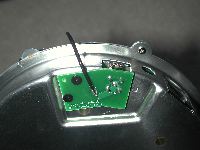 Once that screw is undone, the whole inner enclosure can be lifted out. Here is a shot of the antenna port board mounted to the underside of the metal enclosure. |
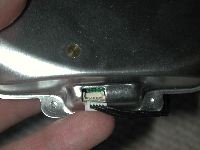 This wiring harness is what supplies the antenna board with power and logic. |
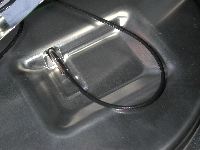 The MC-Card antenna connector is plainly visible in this picture. The card it plugs into is barely visible underneath the metal shell of the enclosure. |
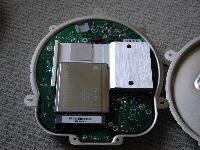 Once the antenna connections on the outside are undone, you can open the inner shell by undoing a number of screws. Inside, you can see the new Airport Extreme mini-PCI card and a rather large Aluminum heat sink. |
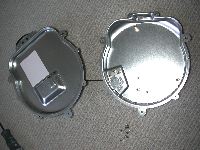 The Inner Shell pieces. Note the large thermal transfer tape on the upper piece that corresponds to the mini-PCI card below. |
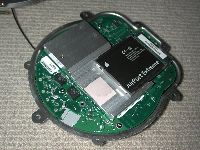 Note how short the mini-PCI card is and how Apple is using the metal shell of the inner enclosure as a heat sink. |
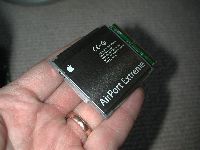 Here is the mini-PCI card that acts as a transmitter for the AEBS. The MC-Card antenna jack is visible over my index finger. The metal casing not only cuts down on interference, it also acts as a thermal conductor. |
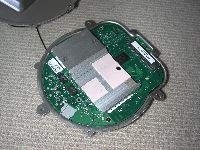 Here is the motherboard without the mini-PCI card. Note the large thermal pad that the card uses. It must get pretty hot! |
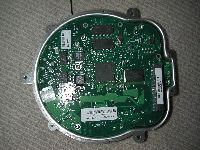 Now without the heat sink. Note the AMD MIPS processor in the middle and the two low-power LC48 Micron SDRAM chips north of it. Just to the left are a number of Broadcom chips that control the ethernet ports. At the left edge of the circuit board, you can see a number of components that help deal with the jacks and ports there. |
The more I took the AEBS apart, the more apparent it became how much attention Apple paid to reducing the power consumption of this unit. The engineers at Apple elected to use a very efficient processor, low power SD-RAM, etc. all in a bid to minimize power consumption and hence heat. As a result, we can hope that the "Extreme" base station will be as reliable as the "Snow" base station that preceeded it.
Onwards to Part III!

